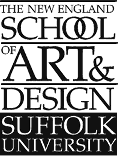
Styles of the Rococo Period
 |
Styles of the Rococo Period |
| Vocabulary (Word Document) |
| Vocbaulary |
| Pictures for these chapters |
| Time Line for Rococo Styles | |
|
|
|
| Louis XV 1723-1774
(historic date, reign of Louis XV)
1720/23-1760/1770 (stylistic date) |
Chippendale 1745-1760ish
reign of George II 1727-1760 (mid Georgian) |
Louis XV Style
A stylistic development from the Regence but without the classical vocabulary
of ornament. The style is characterized by distinctive feminine furniture
form and ornament. The term Rococo is derived from the French word
Rocaille,
or rockwork and is a specific form of asymmetrical ornament composed of
what might be referred to as melting frosting or small broken waves.
(It looks like a word that might sound like sphit).
The furniture forms avoid straight lines whenever possible and the
overall effect is visually inviting. The wonderful shapes are enhanced
with graceful carving, exquisite gilded bronze mounts and masterful marquetry.
(Can you tell this is one of my favorite styles)? About 1760 there
was a move away from the sinuous curve and asymmetrical ornamentation of
the Rococo due to the discoveries at Pompeii and Herculaneum in 1738 and
1747 respectively. The furniture between 1760 and 1770 was in a transitional
phase and exhibited both Rococo and Neoclassical elements. Classical repetitive
motifs and straight lines mingled with chinoiserie and ancient ruins
rendered in marquetry slowly superceded the Rocaille motif.
| Louis XV Characteristics include: | New Furniture Forms |
| Curved forms | Marquise (loveseat) |
| Asymmetrical ornamentation | Canapé |
| Rocaille motifs | Chaise longue (turquoise, one piece duchesse and two or three piece duchesse brisee) |
| Floral motifs | Lit a la polonaise |
| Bowknots and ribbon motifs | Table a ouvrage (some of tricoteuse type) |
| Delicate cabriole legs often terminating in French whorl feet | Bureau a cylindre |
| Carved chair frames | Bureau a pente |
| Feet on case-goods often terminate in sabots | Bonheur du jour |
| Secretaire a abattant | |
| Encoignure |
Chippendale Style in England:
Thomas Chippendale is credited with introducing the Rococo to England.
Although others before him, notably Henry Copeland and Matthias Lock,
had produced designs in this style many years before the publication of
Chippendale's 1754 the Gentleman and Cabinetmaker's Director, it
was this book that popularized the French Rococo style. In the third
edition of the Director, (1759-1762), Chippendale introduced Gothic
and Chinese tastes to his collection. Make no mistake, the Rococo
in England was nothing more than French motifs grafted onto Georgian forms.
Bowknots and ribbons, cabochon and leaf motifs and some rocaille 'sphits'
are
typical of period.
English Rococo is not asymmetrical and lacks the freedom of movement
and pleasing form found in French furniture. It is not uncommon for English
Rococo pieces to terminate in claw and ball feet or bracket feet.
The Gothic and Chinese tastes are easy to recognize as they too are
Georgian forms dressed up in period costume. Gothic ogee arches and
Chinese pagodas and lattice work are typical.
To differentiate a Chippendale chair from the Early Georgian look for
a straightening of the vertical uprights of the back and a flattened
top rail that ends in either a cupid's bow or turns down slightly to meet
the uprights.
Various style legs were popular including straight; cluster column;
and cabriole. Although Chippendale never illustrated the claw and
ball foot in his Director, it remained in fashion.
| Syllabus | Egypt, Greece, Rome, Romanesque, Gothic, Byzantine | Renaissance | Baroque | American Colonial | Contact Marg |